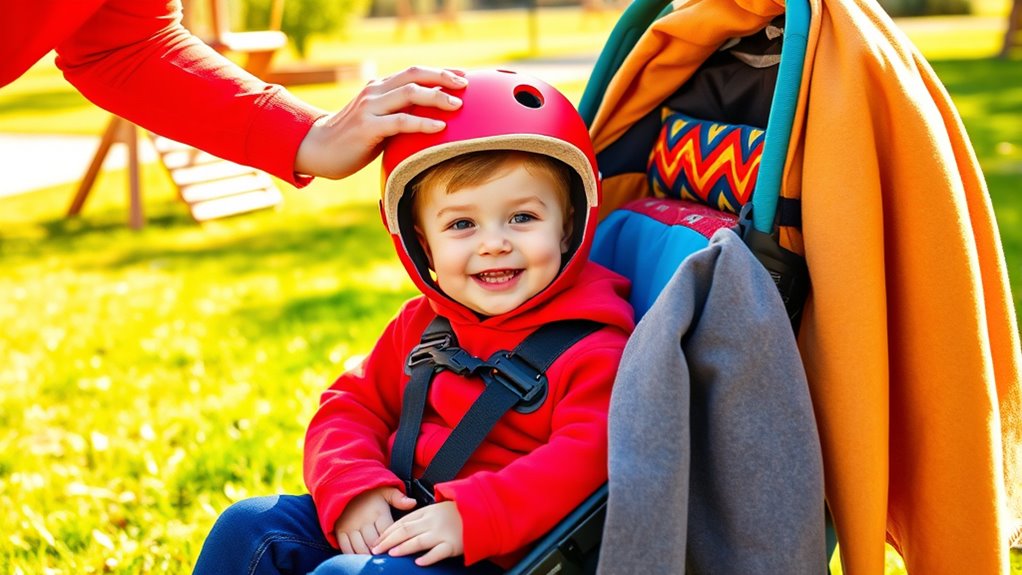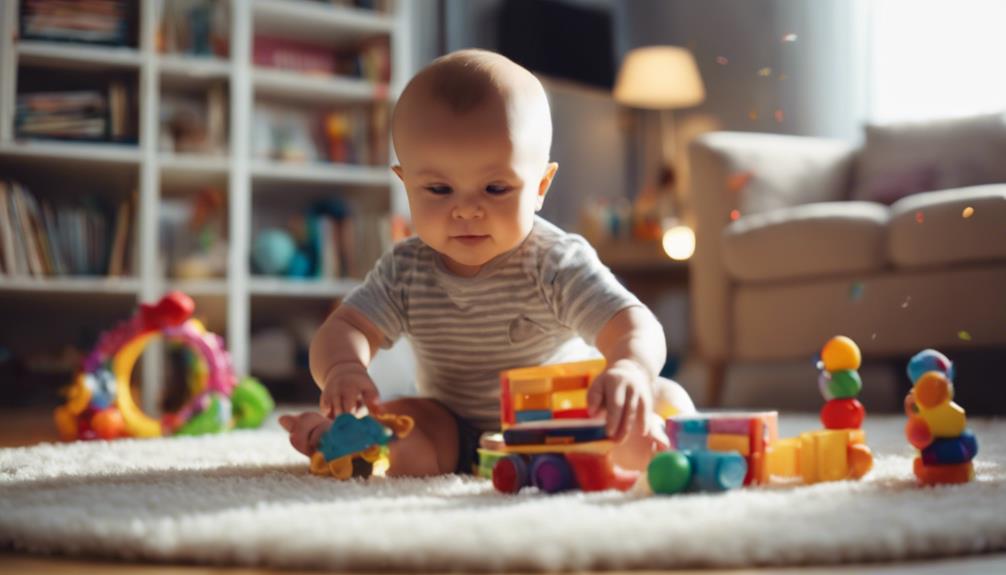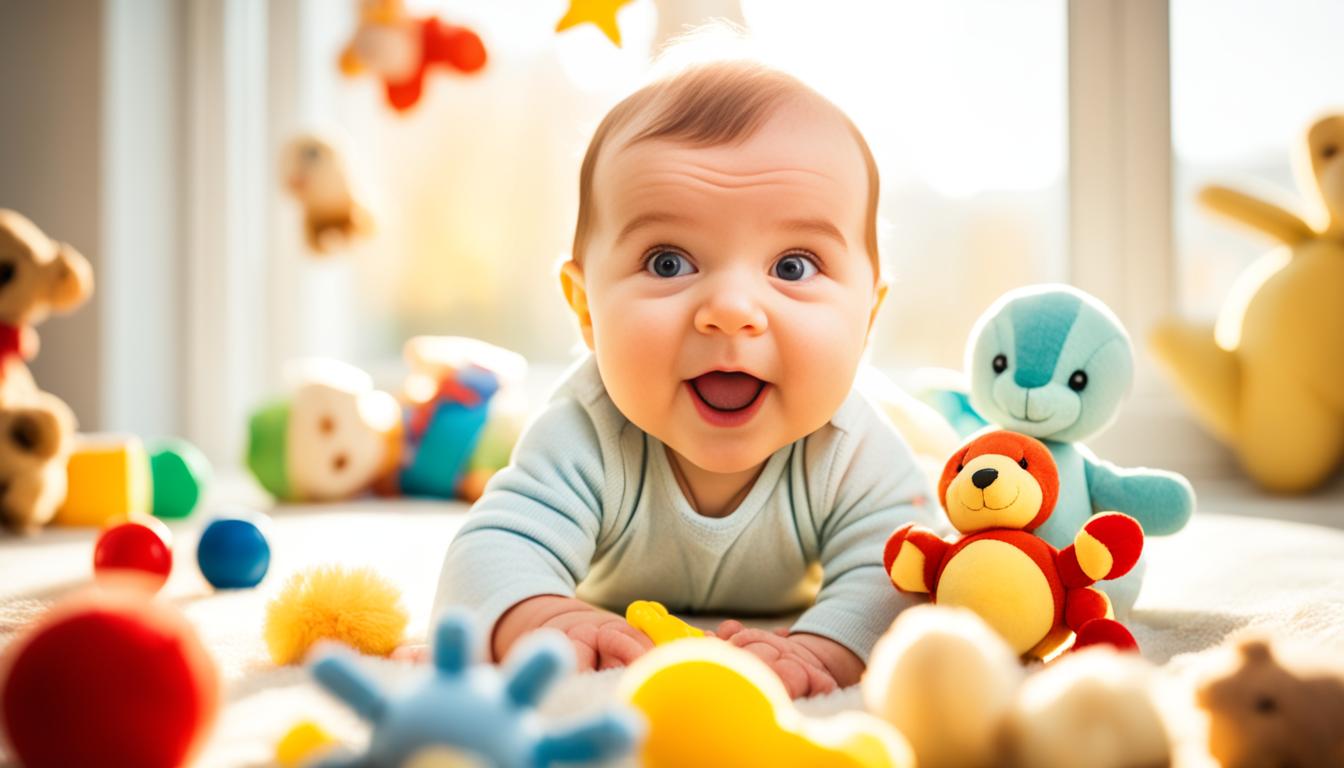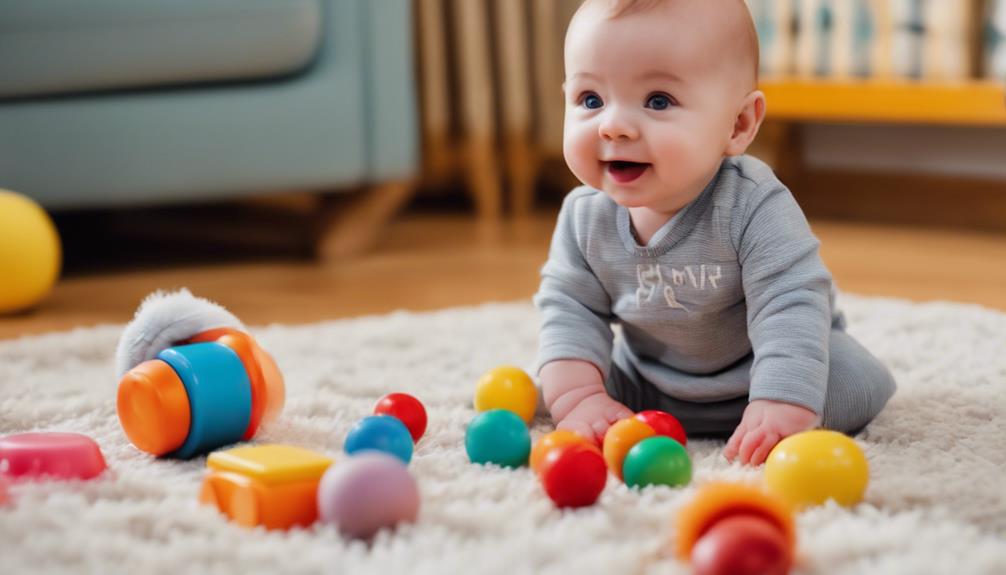To get your toddler park-ready, ensure they’re physically prepared with proper footwear, appropriate clothing, and basic motor skills. Before heading out, check the playground equipment for safety, guaranteeing it’s suitable for their age and well-maintained. Keep supervision close and set clear boundaries, encouraging safe play and responsible exploration. Adding sun protection and hydration helps prevent weather-related issues. If you want to discover more ways to make outdoor play safe and fun, keep exploring these helpful tips.
Key Takeaways
- Dress your toddler in comfortable, weather-appropriate clothing with sturdy shoes for safe, active play.
- Inspect and select age-appropriate, well-maintained playground equipment to minimize injury risks.
- Set clear boundaries and safety rules to guide responsible play and prevent pushing or shoving.
- Supervise constantly, maintaining visual contact and engaging with your child during outdoor activities.
- Keep a first aid kit nearby and be prepared to handle minor injuries promptly and safely.
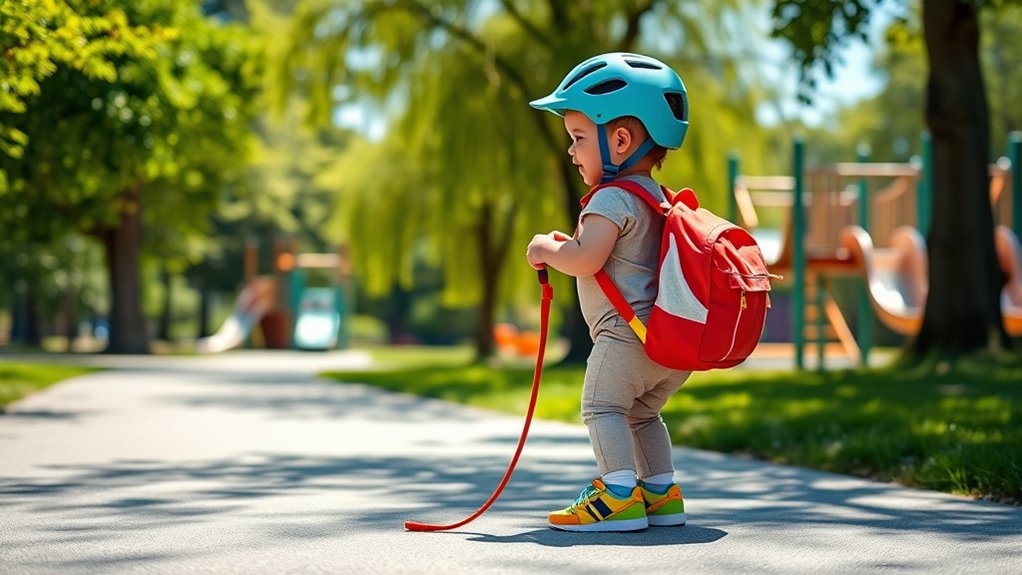
Are you prepared to transform your outdoor space into a fun, safe playground? Creating a secure environment for your toddler starts with understanding the importance of supervision tips and equipment safety. When you’re outside, your constant presence is your best tool for ensuring your child’s safety. Keep a close eye on their activities, especially around climbing structures or swings. Staying attentive helps you catch any risky behavior before it leads to an accident. Use supervision tips like positioning yourself where you can see every part of the play area, avoiding distractions, and engaging with your child. This not only keeps them safe but also encourages responsible play. Remember, toddlers are curious and unpredictable, so being vigilant is key to preventing injuries. Incorporating interior safety considerations can also help create a safer overall environment for your child. Equipment safety is another critical aspect. Before your toddler plays, inspect all the playground equipment thoroughly. Look for sharp edges, rust, loose bolts, splinters, or any broken parts. Ensure that the structure is stable and securely anchored to the ground. If anything looks worn out or damaged, fix or replace it immediately. A well-maintained playground reduces the risk of falls and other accidents. Soft surfacing, like rubber mulch or sand, is essential beneath and around the equipment to cushion any falls. Avoid placing play structures on hard surfaces like concrete or packed dirt, which can cause severe injuries if your child falls. Additionally, select age-appropriate equipment. Slides, swings, and climbing frames should suit your toddler’s size and developmental level. Smaller, lower structures are safer for little ones and help prevent accidental falls. As you prepare your outdoor space, think about making safety a priority from the start. Set clear boundaries for play areas and teach your toddler basic safety rules, like not pushing or shoving others, staying within designated zones, and waiting their turn on equipment. Keep a first aid kit nearby and know how to handle minor injuries quickly. Also, consider adding shade to protect your child from sunburn and heat exhaustion while they’re playing. Regularly check the play area to maintain safety standards, and never leave your child unattended for extended periods. By combining vigilant supervision tips with rigorous equipment safety checks, you create an environment where your toddler can explore and enjoy the playground without unnecessary risks. This proactive approach allows you to foster independence and confidence in your child while ensuring their safety every step of the way.
Frequently Asked Questions
When Should I Start Introducing My Toddler to Playground Safety Rules?
You should start introducing your toddler to playground safety rules as soon as they begin exploring. During playground supervision, explain safety gear like helmets and encourage cautious play. Use simple language and demonstrate proper use of equipment. Reinforce safety rules consistently, making it a fun learning experience. Early awareness helps your toddler develop good habits, ensuring they stay safe while enjoying their time at the park.
How Can I Encourage My Toddler to Share Playground Equipment With Others?
Think of the playground as a bustling marketplace where everyone shares their goods. To encourage your toddler to share equipment, use sharing strategies like gentle turn-taking tips, praising them when they wait patiently, and modeling sharing behavior yourself. Explain that taking turns helps everyone enjoy the fun, just like trading in a marketplace. Consistent encouragement and positive reinforcement will help your toddler learn that sharing makes playtime more enjoyable for all.
What Are Signs My Toddler Is Ready for More Challenging Playground Activities?
You’ll know your toddler is ready for more challenging playground activities when their gross motor skills improve, allowing them to climb higher or jump farther. Watch for increased confidence and coordination, as well as their ability to navigate equipment independently. Additionally, if they’re engaging more with other children, practicing social skills like sharing and taking turns, it’s a sign they’re ready to handle new physical and social challenges safely.
How Do I Handle My Child’s Fear or Reluctance to Try New Equipment?
When your child feels fear or reluctance to try new equipment, practice fear management by offering reassurance and patience. You can build their confidence by encouraging small steps, praising efforts, and celebrating progress. Remind them it’s okay to be cautious, and stay close to provide support. Over time, these strategies help your child feel safe, boosting their confidence and encouraging them to explore new playground challenges.
Are There Specific Health Precautions for Toddlers Playing Outdoors Regularly?
When your toddler plays outdoors regularly, prioritize health precautions like sun safety and insect protection. Make sure they wear hats, sunglasses, and apply broad-spectrum sunscreen, especially during peak hours. Dress them in lightweight, long sleeves to prevent bug bites, and use insect repellent suitable for children. Keeping these precautions in mind helps your little one enjoy outdoor play safely and comfortably, reducing risks of sunburns and insect-borne illnesses.
Conclusion
Now, picture your little one’s face lighting up as they dash through the vibrant playground, their tiny hands gripping the cool, sturdy bars and their laughter echoing amidst the colorful slides. By preparing them physically and ensuring safety, you’re opening the door to endless joyful adventures. As they explore, climb, and swing, you’re building confidence and creating memories that will last a lifetime. So, gear up—ready the playground, and watch your toddler thrive in their exciting new world.

